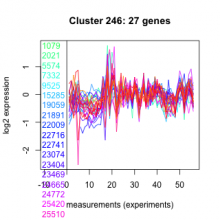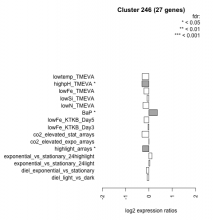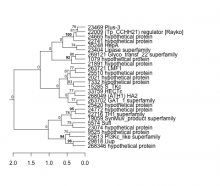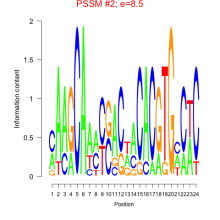23404 Lipase superfamilyThalassiosira pseudonana
| Chromosome | Product | Transcript Start | End | Strand | Short Name | |
|---|---|---|---|---|---|---|
| 23404 | chr_7 | Lipase superfamily | 563909 | 569799 | - | Lipase superfamily |
| NCBI ID | Ensembl Genomes exon ID |
|---|---|
| 7446240 | Thaps23404.1, Thaps23404.8, Thaps23404.5, Thaps23404.2, Thaps23404.4, Thaps23404.7, Thaps23404.3, Thaps23404.6 |
| Expression Profile | Conditional Changes | Cluster Dendrogram | Discovered Potential cis-Regulatory Motifs |
|---|---|---|---|
Thaps_hclust_0246 |
 |
 |
   |
| Normalized Mean Residue | Discovered Potential cis-Regulatory Motifs | |
|---|---|---|
|
Thaps_bicluster_0119 |
0.42 |
 8.5  8.5 |
| KEGG description | KEGG Pathway |
|---|---|
| Not available | Not available |

Add comment